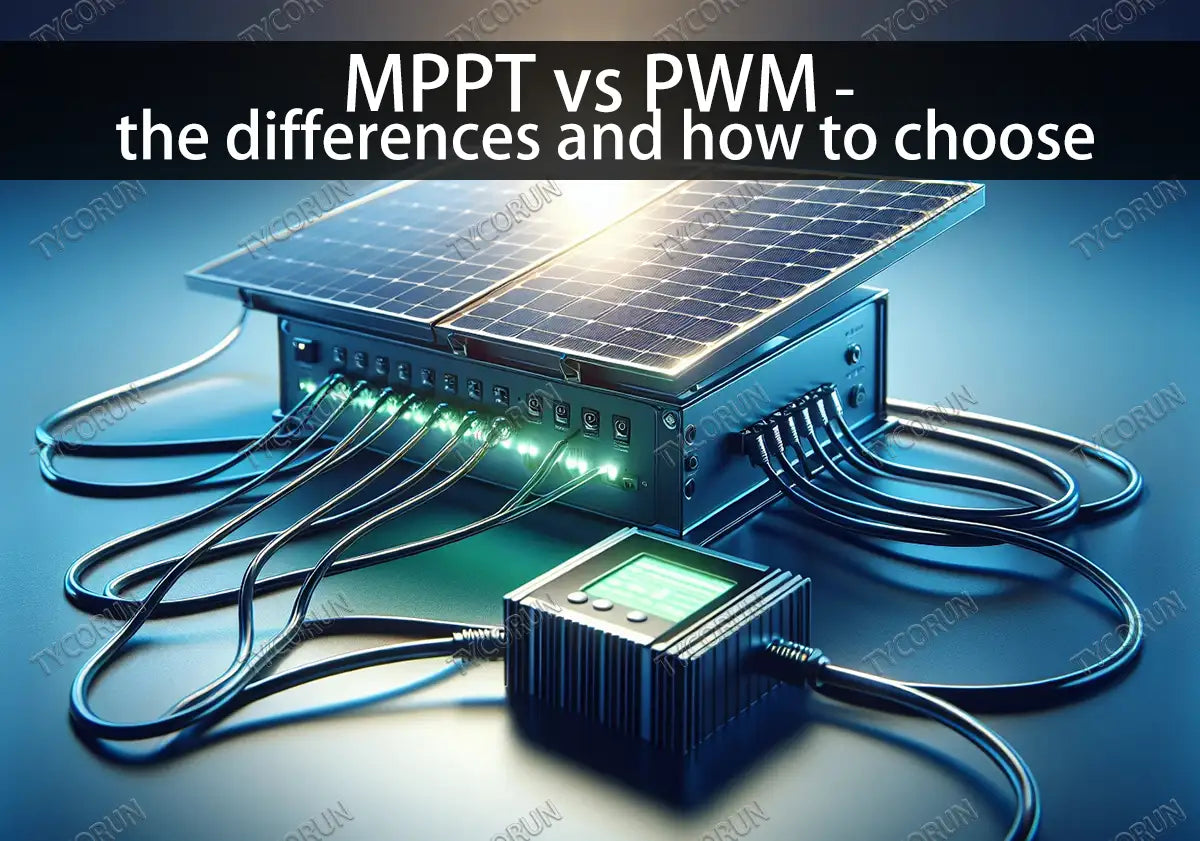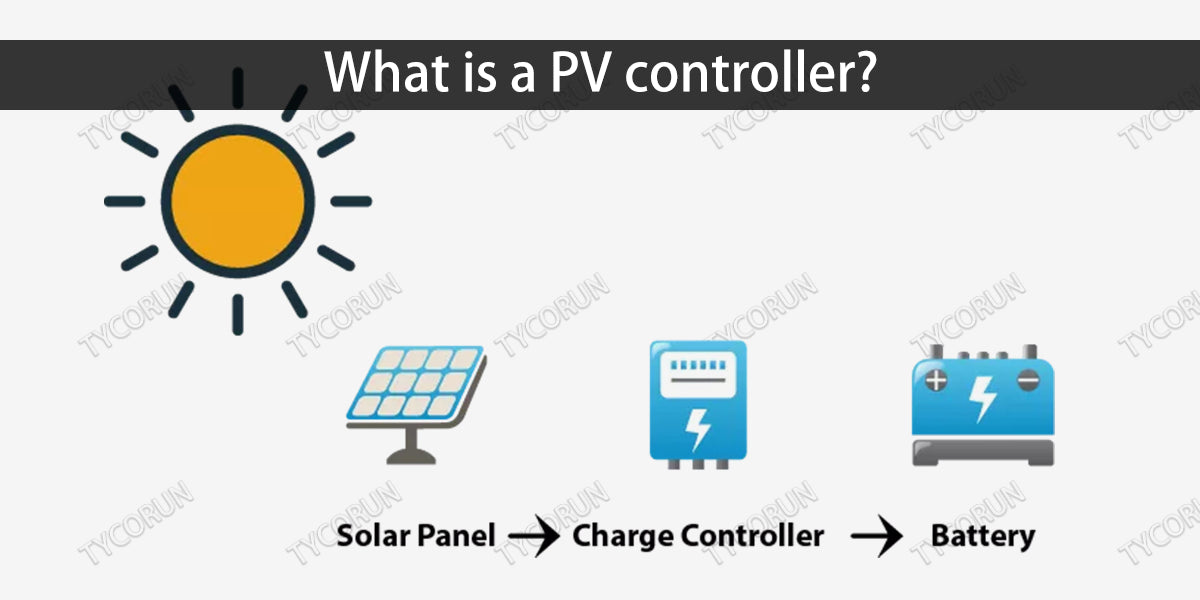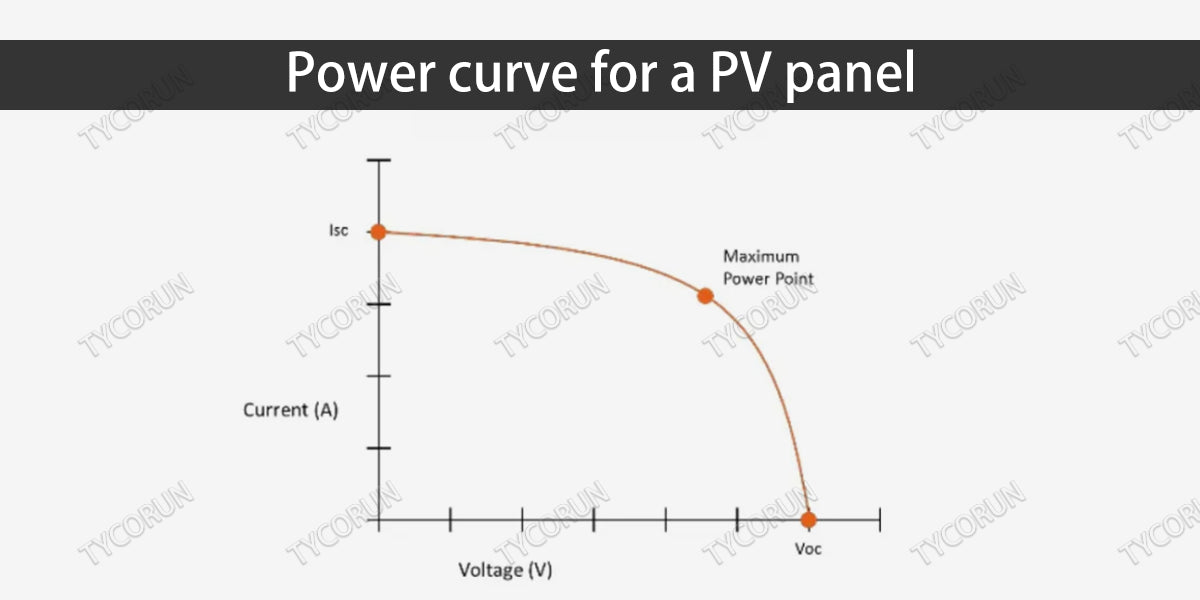
In solar off grid batteries system, the role of the photovoltaic controller is to transform the electricity generated by the photovoltaic modules and store it in the battery. In addition, it also has functions such as protecting the battery and preventing battery overcharging.
At present, there are two main technical routes for controllers: pulse width debugging (PWM) method and maximum power point tracking (MPPT) method. Each method has its advantages and disadvantages and can be selected according to different scenarios. Today we will introduce their characteristics and compare the differences between MPPT vs PWM.
Main content:
1. What is a PV controller?
Before comparing MPPT vs PWM, we should first know what a PV controller is. When there is sunlight, solar street lights convert solar energy into electrical energy through solar panels and store it in the battery; when needed, they convert the electrical energy from the battery into light energy to bring light to the night, and all this implementation requires an inconspicuous but important configuration, which is the photovoltaic controller.
The full name of photovoltaic controller is photovoltaic charge and discharge controller. It is an automatic control device in the photovoltaic power generation system that controls the solar cell array to charge the battery and the battery to power the solar inverter load. It can set control conditions according to the charging and discharging characteristics of the battery, control the power output of the solar cell components and the battery to the load, stabilize the working state of the power station, and at the same time protect the battery, which can prevent battery overcharging, reverse connection and short circuit.

2. Common classifications of PV controller
Photovoltaic controllers can basically be divided into five types: parallel photovoltaic controllers, series photovoltaic controllers, pulse width modulation photovoltaic controllers (PWM), smart photovoltaic controllers and maximum power tracking photovoltaic controllers (MPPT). Commonly used ones are PWM and MPPT.
MPPT vs PWM are two different charging mode controllers for solar charging, which can be used to charge the battery with the current generated by the solar module. Both technologies are widely used in off-grid solar systems, and both are great at charging batteries efficiently. The selection between MPPT vs PWM controller is not based purely on which charging method is "better", but rather on which type of controller is most effective in your system.
3. What is PWM?
PWM (Pulse-Width Modulation) refers to using the digital output of a microprocessor to control analog circuits. It is a method of digitally encoding analog signal levels. Controlling analog circuits digitally can significantly reduce system costs and power consumption. PWM controllers are included in many microcontrollers.
Normal controllers in the old days were generally this type. The electrical structure is relatively simple, consisting of a main power switch, a capacitor, a driver and a protection circuit. It is actually equivalent to a switch that connects the components and the LFP battery. The voltage of the component will be pulled down close to the voltage of the battery pack. The PWM controller has the function of battery charge and discharge management, which can prevent the battery from overcharging and over-discharging.
Since there is only one switch connected between the PWM controller solar module and the battery, and there is no voltage dividing device such as an inductor in the middle, the voltage of the module is about 1.2-2.0 times the voltage of the battery during design. For example, for a 24V battery, the module input The voltage is between 30-50V, and each string can only be equipped with one module. For a 48V battery, the module input voltage is between 60-80V, and each string can only be equipped with two modules.

PWM controller adopts a three-stage charging method of strong charging, balanced charging, and floating charging.
① Strong charging: Also called direct charging, it means rapid charging. When the battery voltage is low, the battery is charged with large current and relatively high voltage.
② Balanced charging: After the strong charge is completed, the battery will sit for a period of time. When the voltage naturally drops to a certain value, it will enter a balanced charging state to make the battery terminal voltage uniform.
③ After the equalization charge is completed, the battery will still be left for a period of time to allow the terminal voltage to naturally drop. When it drops to the "maintenance voltage" point, it will enter the float charging state. The PWM (Pulse Width Modulation) charging method is similar to trickle charging, which means charging the battery a little more when the battery voltage is low, to prevent the battery temperature from continuing to rise. The pulse width is adjusted to reduce the battery charging current, so that the battery has a longer service life.
The controller of this charging method can solve the problem of insufficient battery charging and ensure the service life of the battery. However, it should be noted that the charging efficiency of the PWM controller will be affected by temperature. When the solar battery cell temperature is around 45~75℃, the charging efficiency is the best.
4. What is MPPT?
MPPT stands for Maximum Power Point Tracking. To understand the difference between MPPT vs PWM charging, let’s first take a look at the power curve of the photovoltaic panel. The power curve is important because it shows the expected power generation of a photovoltaic panel. The voltage ("V") and current ("I") produced by photovoltaic panels. The voltage at which maximum power is produced is called the "maximum power point." MPPT will track dynamic changes throughout the day, depending on lighting conditions.
P=U*I (P means the power generated by the photovoltaic panel)
① MPPT current-limiting charging: When the battery terminal voltage is very small, the MPPT charging method is used to pump the output power of the solar panel to the battery terminal. When the light intensity is strong, the output power of the solar panel increases and the charging current reaches the threshold, and then it is terminated, and MPPT charging switches to constant current charging; when the light intensity becomes weak, it switches to MPPT charging mode again.
② Constant voltage equalization charging: The battery can freely switch between MPPT charging mode and constant current charging mode. When the battery voltage reaches the saturation voltage, it enters the constant voltage equalizing charging stage. As the battery charging current gradually decreases, when it reaches 0.01C, this charging phase ends and enters the float charging phase.
③ Constant voltage float charging: Float charge the battery at a voltage slightly lower than constant voltage charging. This stage is mainly used to supplement the kinetic energy consumed by the battery's self-discharge.

This kind of controller is more complex and more expensive comparing MPPT vs PWM. It is usually several times or even dozens of times more expensive than a PWM controller. It can adjust the input voltage to obtain maximum energy from the solar panel.
- It has a maximum power tracking function. During battery charging, the solar module can output at maximum power unless the battery reaches saturation;
- The voltage range of photovoltaic modules is wide. There is a power switch tube and inductor circuit in the middle of the controller. The voltage of the module is between 1.2-3.5 times the voltage of the battery. If it is a 24V battery, the input voltage of the module is between 30-80V.
- Each string can be equipped with one to two components. If it is a 48V battery and the component input voltage is between 60-110V, each string can be equipped with two to three components.
5. Differences between MPPT vs PWM
Regarding the choice of MPPT vs PWM, a simple comparison was made between the two.
|
Difference |
MPPT |
PWM |
|
Price |
2-3 times more expensive |
Cheaper |
|
Service life |
Short |
Longer |
|
Conversion efficiency |
About 30% higher than PWM |
Lower |
|
Usage |
Both the battery pack voltage and solar panel voltage are adjustable, makes the applicability stronger. |
It can only be used with relevant voltages, suitable for off-grid systems below 2KW. |
When compare MPPT vs PWM controller, MPPT controller has maximum power tracking function. Before the battery reaches saturation state, during charging, it can ensure that the solar panel always outputs at maximum power without being affected by temperature. From the perspective of charging efficiency, naturally it is higher than PWM comparing MPPT vs PWM.
In addition, the PWM controller can only be used with relevant voltages. For example, the 12V system battery board can only be used with 12V controllers and batteries. It is suitable for some small off-grid systems below 2kw. It has a simple structure, convenient user wiring, and is relatively cheap.
The MPPT controller has a larger space to use. Generally, the solar panel can be used between voltage of 12V~170V, and the battery voltage is adjustable from 12V~96V. It has stronger applicability and is suitable for large off-grid systems above 2kw, high efficiency, and flexible component configuration.
MPPT controller is the second generation solar controller. Comparing MPPT vs PWM controller, it has an additional inductor and power diode, so it is more powerful.

6. How to choose MPPT vs PWM controllers?
Both PWM and MPPT controllers have their own unique advantages and disadvantages. Which solution to choose between MPPT vs PWM depends on the design characteristics of the solar photovoltaic array, cost, external environment, etc. When we choose, we should consider the following factors:
- The PWM method has mature technology when compare MPPT vs PWM, and also simple and reliable circuit, and low price, but the component utilization rate is low. The module utilization rate is about 80% or more; As for MPPT controller, there is a BUCK step-down circuit between the module and the battery, and the module utilization rate is about 90% or more.
- Small off-grid systems below 2kW are mainly used in remote areas without electricity or with unstable electricity, such as remote mountainous areas. For these areas, it is recommended to use PWM controllers comparing MPPT vs PWM. The system integrates the controller, inverter and battery. This method has a simple structure, high efficiency, convenient wiring for users, and is very cheap. It can drive light bulbs, small TVs, and small fans with pure wave sine 1000w inverter or 2000w inverter.
- For off-grid systems above 2kW, it is recommended to use MPPT controllers, which have high component utilization, high overall machine efficiency, and flexible component configuration.
Generally speaking, neither PWM nor MPPT technology is the best, so you should follow the advice of experts and ensure that choose the right controller between MPPT vs PWM to meet your needs.
Related posts: global top 10 best solar inverter brands, top 10 solar inverters in Australia, top 5 solar battery storage companies in Indonesia